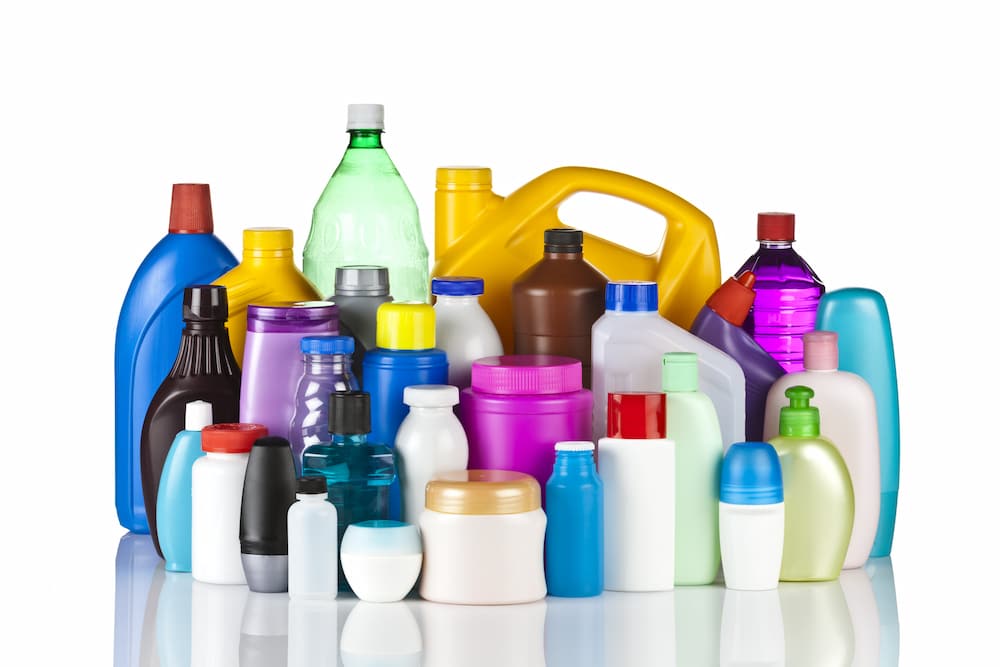Canberra designer Candice Addicoat has pioneered a technique to turn polyethylene plastic into art and household items, but materials scientist Victoria Pearce is concerned that melting polyethylene could be toxic. Ms Pearce shared her thoughts with CW.
It has been a long time since I studied polymer science, but one thing that sticks in my mind is that there really are not actually many different commonly used polymer families: polyester, high- and low-density polyethylene, polyvinyl chlorides, polystyrene and a few more.
Yet there are millions of different plastics and plastic products, all with a variety of qualities and properties, including melting point, transparency, and flexibility. These different properties are usually derived by the commercial-in-confidence recipes that each manufacturer develops by incorporating fillers, plasticisers, dyes, pigments, die release agents, surfactants, antioxidants, and stabilisers.
There are hundreds of different additives and even more combinations and recipes, giving us a complex world of plastics. The variety and range of additives often make it expensive to recycle some forms and blends, making it challenging to recover the base polymer for reuse.
The core polymer is often defined purely by its base structure; additional variations are a result of chain length, and the infinite permutations are not well considered. We know, however, that stable polymers include ingredients that break down or have a finite lifespan (such as antioxidants and stabilising agents), and that plasticisers and other ingredients can leach out or off-gas.
Polyethylene is considered one of the more stable polymers, but this does not guarantee that the fumes produced when heating it will be safe. Any polymer outside its designed and intended use and lifespan has the potential to no longer be safe.
With regards to safety, another significant variable is in human vulnerability. We do not fully understand why a person with asbestos exposure can end up very sick while another person with similar exposure may not. This is the great lucky dip of life. Toxicity is not purely about exposure times or exposure levels, but also about accumulative impact. The variety of variables in the polymers and their breakdowns makes plastics a nightmare for museum collections and family collections. Deterioration is known to be unpredictable, and can lead to all sorts of issues including respiratory harm, skin irritations, and cancers.
There is a long history of recycling rubbish for arts and crafts, and mostly it is small scale. Some of this contains unintended hazards such as lino craft produced from recycled 1950s linoleum, which had a significant inclusion of asbestos, or art from recycled corroded metals that carry significant tetanus risks.
Often, ideas about art and craft projects come from global social media. However, commonly no-one has looked at the occupational health and safety issues. Some ideas come from communities where OH&S is not a concern. I have seen craft from the landfill tip face at Tondo, in the Philippines, where recycling is the only livelihood. Few realise that the average life expectancy of workers here is less than 45 years.
In the global marketplace, we have access to materials, supplies, and ideas from around the world; while this may seem exciting, it also means we are no longer protected by safety standards and important limitations until things have gone terribly wrong.
Chopping something up will not reduce the hazard it presents. A bottle floating on an ocean is ugly and a hazard, but probably not as much as millions of small plastic pieces, which can impact digestive systems and the entire food chain. Chopped plastics also have vastly greater surface area available to off-gas. Reuse of materials in their manufactured form within the range of intended lifespan is ideal. Following this, recycling on a commercial scale with appropriate fume extraction and contaminant measuring systems is probably safest.
The reduction of single use plastics is an admirable way our leaders and community can do their part. Putting limits on planned obsolescence and multiple layers of packaging is the next step.
Veronica Pearce, B.A. Hon. (Fine Art) and B.App.Sc. (Conservation), is director and senior conservator of Endangered Heritage.



